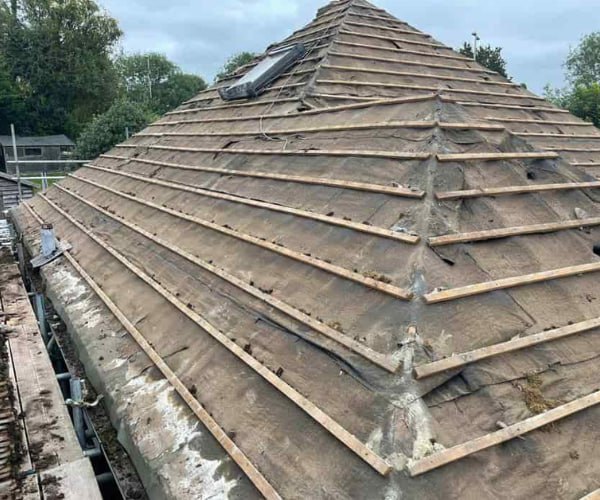Ensuring Longevity: Properly Sealing Joints and Seams in Hipped Roof Re-Roofing
Introduction: Hipped roofs, with their distinctive sloping sides and ridgelines, are a common architectural feature known for their durability and aesthetic appeal. However, like any roofing structure, hipped roofs require periodic maintenance and replacement to ensure continued protection against the elements. When undertaking a re-roofing project for a hipped roof, one of the critical considerations is the proper sealing of roofing joints and seams. At DHT Roofing Cudworth, we understand the importance of meticulous attention to detail in roof replacement to safeguard homes against leaks and water damage.
Understanding the Importance of Sealing Joints and Seams
Joints and seams, including hipped roofs, are vulnerable points in any roofing system. If left unchecked, these areas are prone to water infiltration, leading to moisture damage, mould growth, and structural deterioration. Properly sealing roofing joints and seams is essential for maintaining the roof’s integrity and ensuring long-term protection against water penetration.
Steps for Properly Sealing Roofing Joints and Seams
- Surface Preparation: Before applying any sealant, it’s crucial to clean and prepare the roofing materials’ surfaces thoroughly. Remove any dirt, debris, or old sealant residues to ensure proper adhesion of the new sealant.
- Choose the Right Sealant: Appropriate sealant is paramount to achieving effective sealing. Flexible and weather-resistant sealants such as silicone or polyurethane-based products are commonly recommended for hipped roofs. These sealants can withstand the expansion and contraction of temperature fluctuations and provide long-lasting protection against water intrusion.
- Apply Sealant Along Joints and Seams: Using a caulking gun or trowel, apply the sealant generously along all joints, seams, and intersections of roofing materials. Pay close attention to areas where different roof planes meet and around flashing, vents, chimneys, and other penetrations.
- Ensure Proper Adhesion: Press the sealant firmly into the joints and seams to ensure proper adhesion and eliminate air pockets or gaps. Smooth the sealant with a putty knife or gloved finger to create a uniform seal and promote water runoff.
- Inspect and Maintain: Once the sealant has cured, thoroughly inspect the roof to ensure that all joints and seams are properly sealed. Periodic maintenance inspections should be conducted to check for any signs of wear or damage to the sealant and address any issues promptly.
Conclusion: Properly sealing roofing joints and seams is critical for hipped roof re-roofing projects. By following meticulous surface preparation and application techniques and choosing high-quality sealants, homeowners can safeguard their homes against water damage and enjoy peace of mind, knowing that their roofs are built to last.
Call us on: 01226 445 195
Click here to find out more about DHT Roofing Cudworth
Click here to complete our contact form and see how we can help with your roofing needs.

